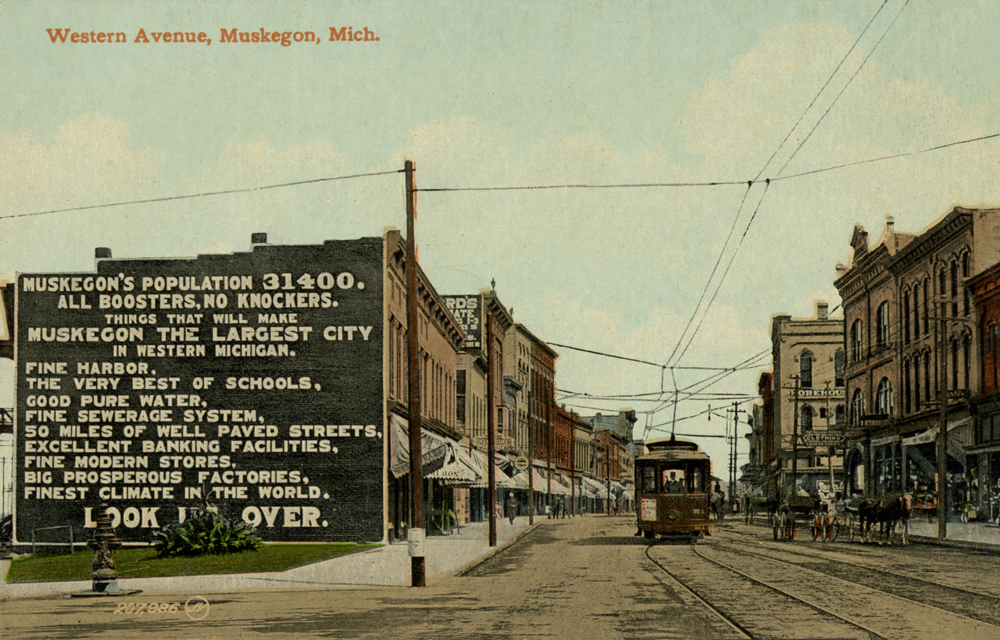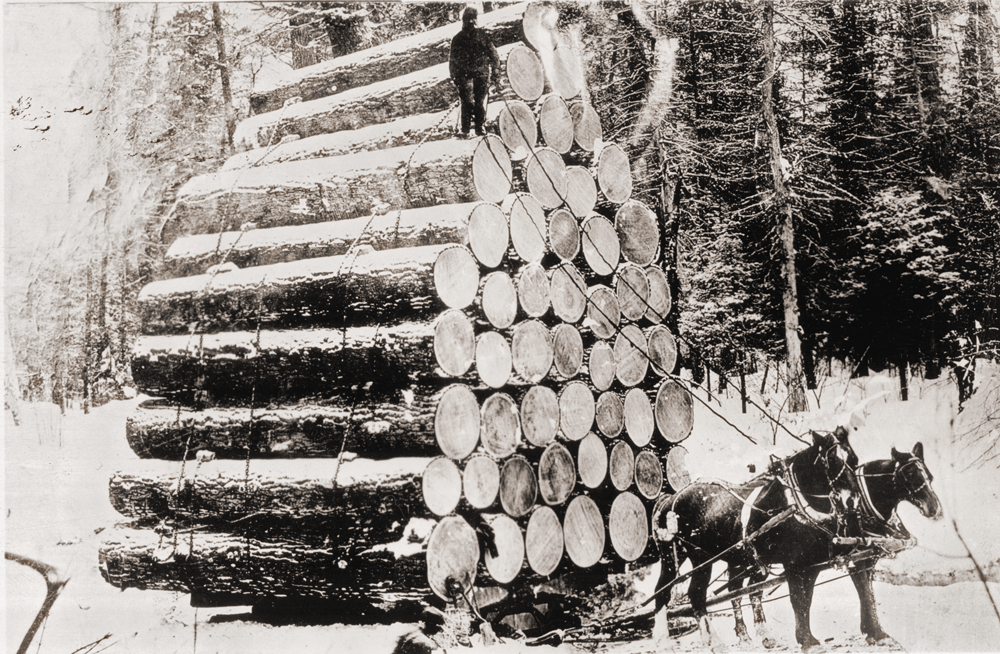Muskegon. In 1857, when New Yorker Wesley Wood stopped in Muskegon, he discovered a seemingly lawless frontier community. Although “saloons, dram shops and gambling places abounded,” Wood “very firmly” believed Muskegon was destined to become “a very important” business and population center. He was right. As present-day Muskegon transitions into a high-tech manufacturing, tourism, healthcare and maritime-based economy, this history-steeped city is also home to a winter sports complex, state-of-the-art planetarium, trolley rides, state parks, the Lake Express and assorted thrills at Michigan’s Adventure.
 Located at the mouth of one of the state’s longest rivers, Muskegon’s name comes from the Ottawa word, “Masquigon,” which means “marshy river or swamp.” Euro-American settlement coincided with early exploitation of the area’s vast timber resources. By the late 1860s, Muskegon boasted a population of 6,000 people. With 32 sawmills in 1870, the city earned the nickname “Lumber Queen of the World.”
Located at the mouth of one of the state’s longest rivers, Muskegon’s name comes from the Ottawa word, “Masquigon,” which means “marshy river or swamp.” Euro-American settlement coincided with early exploitation of the area’s vast timber resources. By the late 1860s, Muskegon boasted a population of 6,000 people. With 32 sawmills in 1870, the city earned the nickname “Lumber Queen of the World.”
Lumbering peaked in 1887 when Muskegon’s mills cut 665 million board feet of lumber, as well as millions of lath and shingles. Most of that lumber was loaded on to vessels (up to 30 daily) and shipped to Chicago and other Midwestern markets. As in other lumbering towns, Muskegon faced economic uncertainty as the mills closed.

Lumbering created a wealthy class of entrepreneurs and Muskegon boasted more “silk hats per capita than anywhere in the United States.” As the forests disappeared, these “lumber barons” often took their operations (and wealth) and left. Not Charles H. Hackley. A classic rags-to-riches story, Hackley led a successful campaign to replace Muskegon’s closed mills with new and different industries. Believing “a rich man to a large extent owes his fortune to the public,” Hackley also agreed with Andrew Carnegie’s claim, “It is a crime to die rich.” Hackley’s many gifts to Muskegon (valued at $12 million in 1905) are still evident today.
Lumbering contributed to another appellation, as well: “The Port City.” Discover why and more about this top Gold Coast spot at visit muskegon.org. ≈

Muskegon
Historic Highlights
• Dive into Muskegon’s deep maritime history by touring revered in-water vessels: The USS Silversides Submarine Museum, located channel-side near Pere Marquette Park
(silversidesmuseum.org); the USS LST 393 Veterans Museum, a restored World War II landing craft and Omaha Beach D-Day veteran (lst393.org); the S.S. Milwaukee Clipper, Muskegon’s first cross-lake ferry from 1941-1970 (milwaukeeclipper.com); the White River Light Station (est. 1875), reborn as a museum with vast artifacts and displays (whiteriverlightstation.org); and the West Michigan Underwater Preserve: the area between the Muskegon and White Lake channels hosts varied compelling shipwrecks and dive sites (wmup.org).
• Explore the Lakeshore Museum Center’s new Heritage Park at Hilt’s Landing, an 18-acre, open-air museum featuring interactive costumed interpreters and walk-in exhibits from 10,000 years of Michigan history including a wigwam, fur trader’s cabin, 1840s’ settler’s cabin, Civil War camp, logging shanty and 1880s’ farmhouse (lakeshoremuseum.org).
• Visit the Hackley & Hume Historic Site and tour the renowned homes of Muskegon’s wealthiest lumber barons, Charles Hackley and Thomas Hume. While these painstakingly restored residences stand as two of the globe’s finest Queen Anne-style Victorian examples, National Historic Hackley Park in downtown Muskegon, presented by the lumberman to his city in 1890, hosts year-round community events, from music concerts and art fairs to Parties-in-the-Park (lakeshoremuseum.org).
Roger L. Rosentreter teaches Michigan history courses at Michigan State University. Lisa M. Jensen is editor of Michigan BLUE Magazine.
Photography courtesy Lakeshore Museum Center & Vintage Views








Facebook Comments